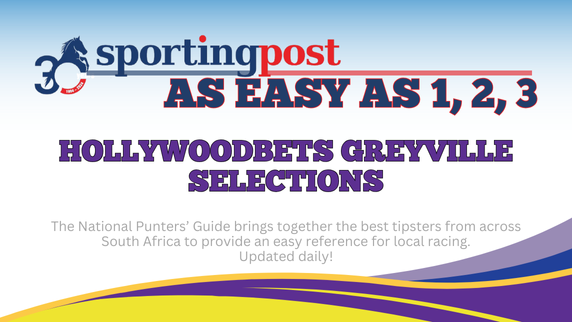Ever year a new bunch of well bred, and well performed, stallions are sent from the Northern Hemisphere to the South in order to cover large books of well bred mares. This concept, known as shuttling, has resulted in breeders in the Southern Hemisphere having access to some of the world’s top stallions. Many of these horses are the best credentialled stallions around, sporting often an outstanding race record, fashionable pedigree and, sometimes, a proven stud record. However, the majority of these commercially attractive horses fail to leave their mark in the Southern Hemisphere, writes Sarah Whitelaw.
Shuttling stallions from the Northern Hemisphere to the South is not a new concept. Shuttling took place as far back as the 1970’s, when Pretendre (later to sire Kentucky Derby winner Canonero II) shuttled to Waikato Stud in New Zealand. In the modern era, stallions shuttle from the Northern Hemisphere to Australia and New Zealand. The less fashionable, or unproven sires, tend to shuttle to South America, and often stay there for the rest of their stud careers.
Shuttling first became a important part of the Australian breeding industry in 1987.
In 1990, Danehill shuttled to Australia for the first time, where he was to leave an indelible mark on the breed. Champion sire on nine times in Australia, Danehill’s legacy at stud includes the champion sires Flying Spur and Redoute’s Choice, as well as a host other successful sons. He has also been champion broodmare sire in Australia on five occasions. Remarkably, Danehill has no fewer than 114 sons at stud in Australasia!
Since Danehill, however, no shuttle stallion has come close to emulating his success. This despite the fact that the list of top-class international shuttle sires included Giant’s Causeway, Galileo, Unbridled’s Song and Distorted Humor. Whilst there have been shuttle sires to have enjoyed a consistent level of success, such as More Than Ready and Red Ransom, overall there seems to have been more disappointments in the ranks of shuttle sires than success stories.
But how successful has the experiment of shuttling been? Just two shuttle stallions have headed the sires list in Australia, Last Tycoon and Danehill. The latter headed the premiership on nine occasions and has left a host of successful sire sons behind, whilst Last Tycoon’s legacy includes the champion New Zealand sire O’Reilly. Another shuttle sire, Fairy King, had an overall disappointing record during his stint in Australia, but he did get Encosta de Lago, one of the best sires at stud in Australia today. Encosta de Lago himself has gone on to be represented by a host of sire sons at stud, and looks likely to leave his mark.
Since the 2005-2006 season, each year has seen the Australian general sires list headed by an Aussie-bred sire.
On the Australian general sires list for the past season of 2009-2010, just three of the top ten sires, by earnings, were shuttle stallions. Only one shuttle sire managed to finish in the top ten on the 2yo sires list (More Than Ready), and just one shuttle sire featured in the top ten of the first season sires list.
Another indication of the growing success and popularity of the Australian-bred stallion is that all of top ten sires (by mares covered) in 2009 were bred in Australia.
Between 1987-1997, a study was done of shuttle sires and locally bred stallions. The study showed that the shuttle horses had an average fee of $15,000 in comparison with the local horse’s fee of $9,000 of the natives.
The earnings per runner of the shuttle vs local horse was $47,000 vs $31,000 per Aussie residents. Inevitably the shuttle stallions were mated with a better quality of mare, and yet the end result suggests there was little to choose (considering the stud fees and actual end performance) between the two groups of stallions.
Figures at some of the region’s top yearling sales reflect the market’s growing swing towards some of the locally bred stallions.
At last year’s Inglis Easter Sale, the top three stallions (represented by two or more yearlings) were the locally bred and raced Redoute’s Choice and Encosta De Lago, whilst the New Zealand based sire Zabeel was the third most sought after sire.
At New Zealand’s Premier yearling sale of 2010, the top five lots were all sired by New Zealand or Australian bred and raced stallions.
Another problem facing breeders supporting shuttle stallions is overproduction for the sales ring. With many of the top sires, particularly the overseas shuttle horses, covering 150 mares plus a season, the market is flooded with yearlings by fashionable horses.
Proof of how the Australian breeding industry’s support of the shuttling sires has changed, can be seen in the breeding statistics of the 2009-2010 season. Of the top ten busiest stallions of that season, nine were Australian bred. And whilst the list was headed by High Chaparral, one of Coolmore’s shuttle stallions, 18 of the top 21 most popular sires “down under” were Australian bred. This is quite remarkable when taking into account the quality of horse which shuttles to Australasia.
The debate regarding the merits of shuttling will rage on as long as the practice continues. Whilst the Australian thoroughbred clearly owes much to the influence of a few shuttle stallions, in general, it’s safe to say that the experiment of shuttling stallions has not been the overwhelming success (when taking into account the large numbers of top-class sires involved) it was expected to be.
Clearly, however, there are a large number of promising young Australian bred sires who could put some of the flashier shuttle stallions to the sword.








